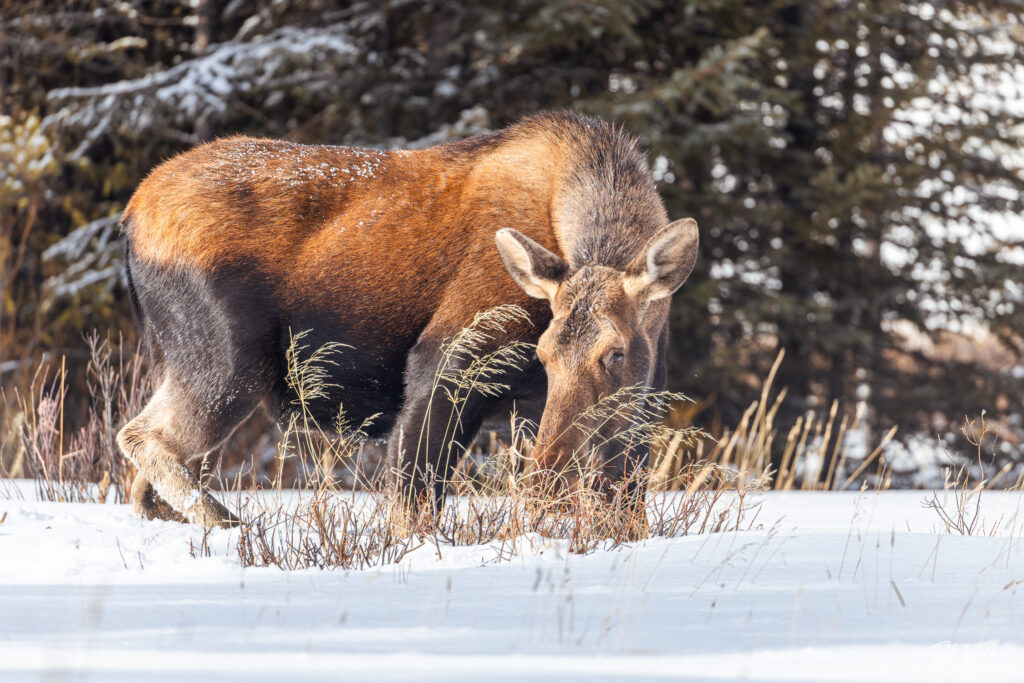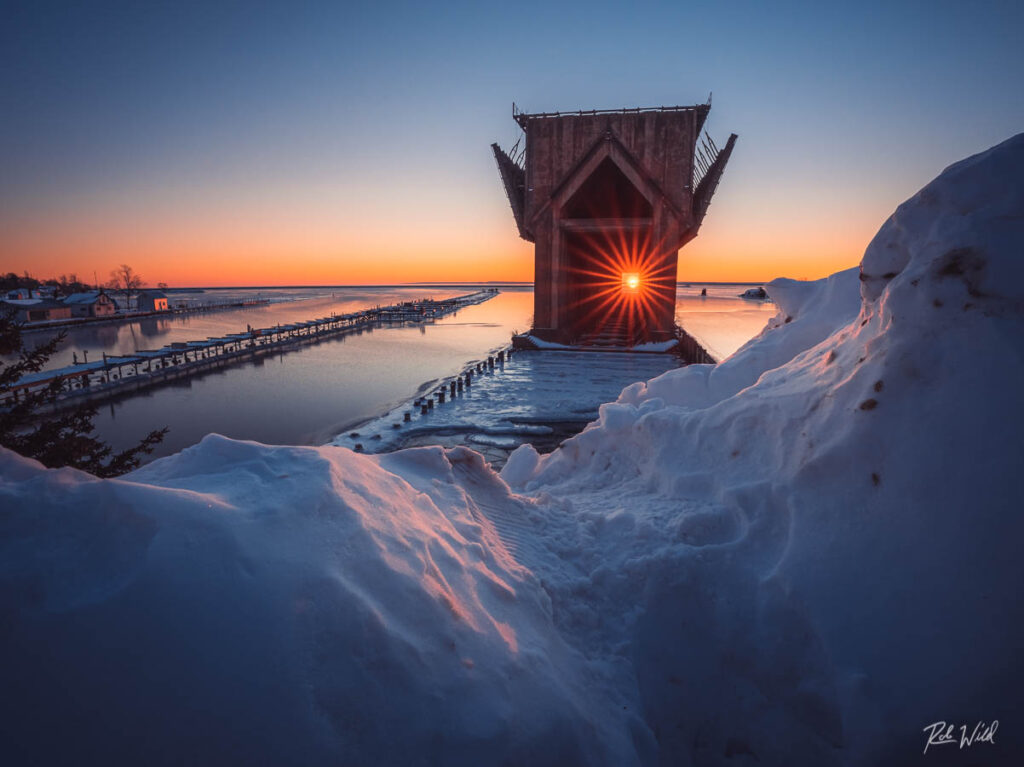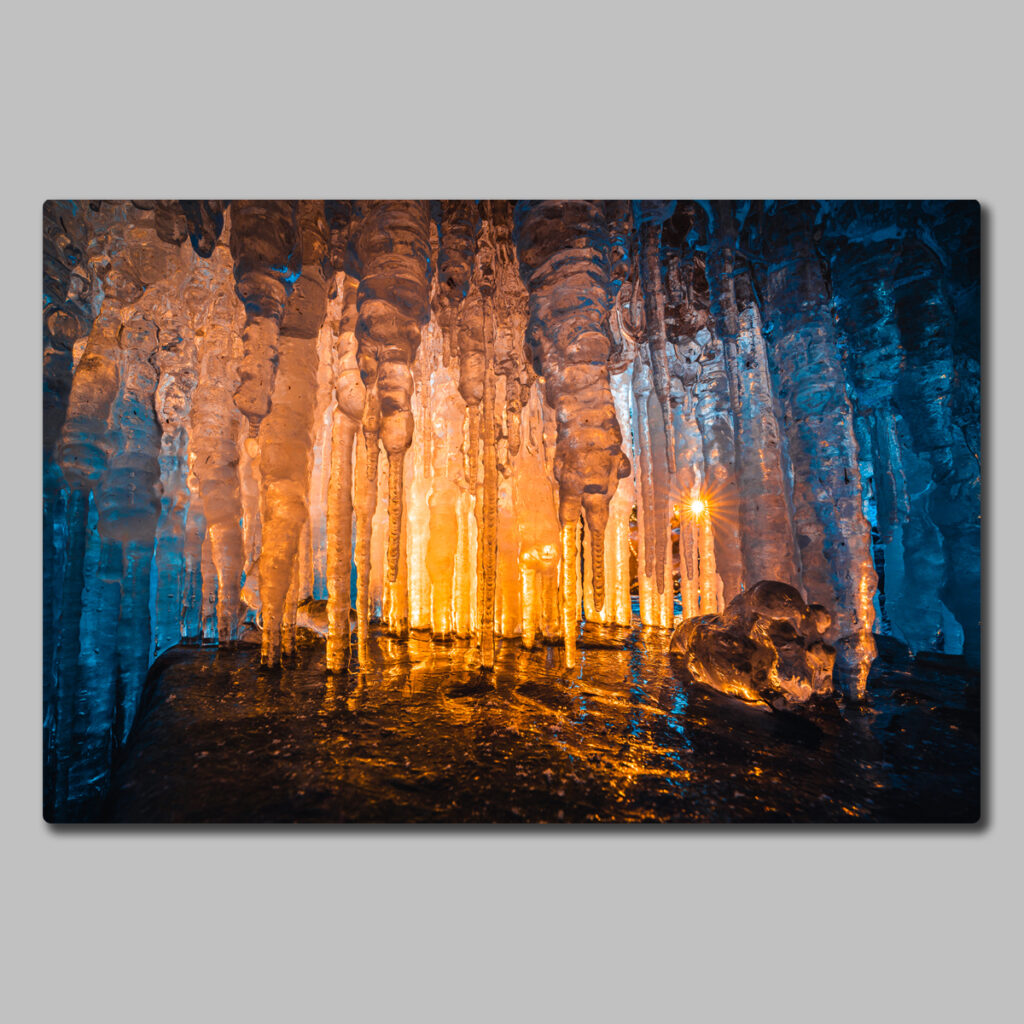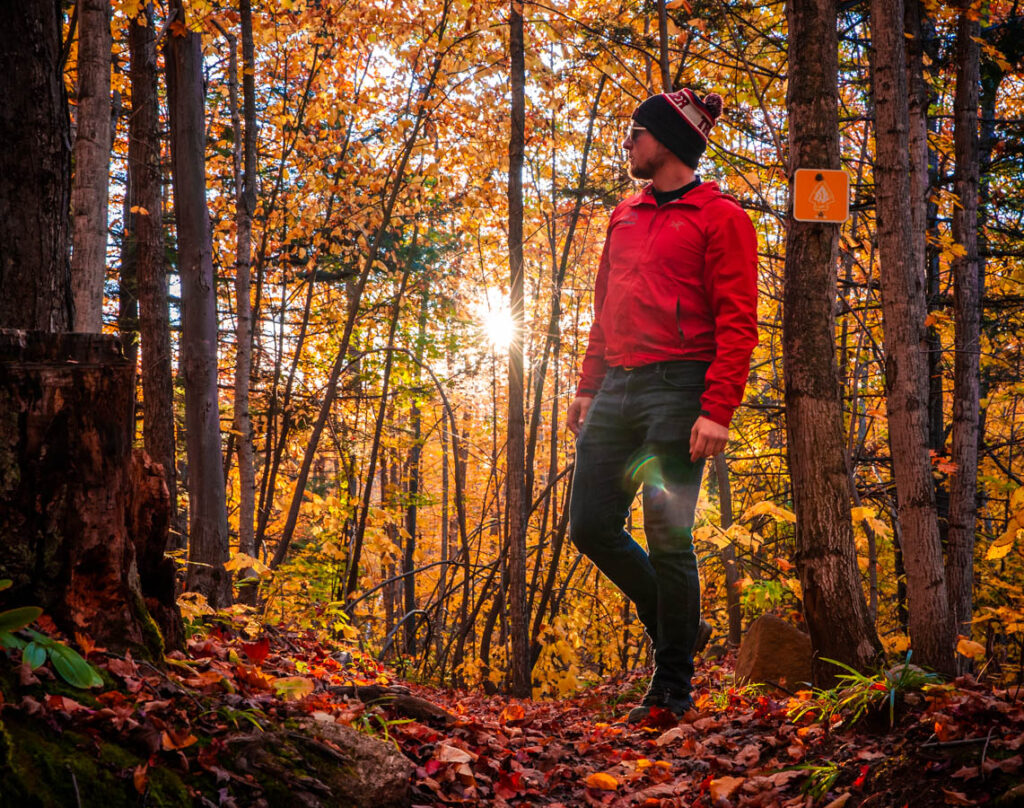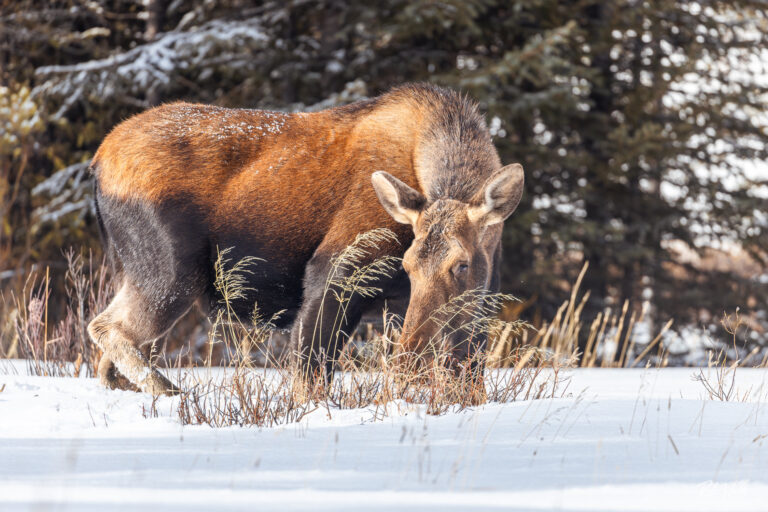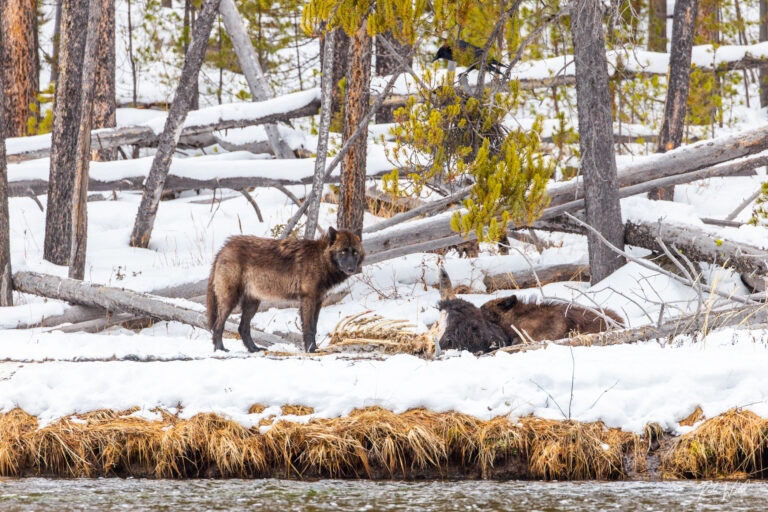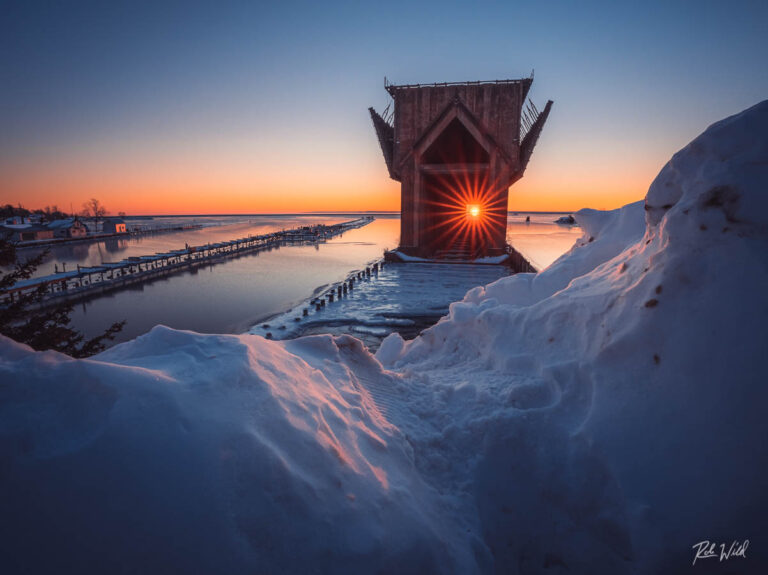The howl of a wild wolf cuts right through to the soul.
It is a haunting and beautiful sound, full of ancient wisdom, yearning, passion, and sorrow. I have heard that call many times, usually from a great enough distance that there is a few-second lag between seeing the howl in our spotting scopes and hearing the actual sound. Even from a mile or more away, it stops you in your tracks and transports you to another time, when wolves were still the most widespread mammal on Earth and their melodious vocalizations were the universal language of wilderness.
But at close range, that howl is downright profound. To use a phrase from a much less ancient language: it just hits different.
I was guiding an amazing group of photographers from Women in Wildlife Photography on a nine-day photo expedition in Yellowstone. The day before the group was scheduled to arrive, the Wapiti Lake wolf pack was observed hunting a bison in close proximity to the road along the Firehole River, driving the beast into the river and exhausting it until it was simply too tired to keep its head up any longer. With no more fight left to give, the bison lowered its head into the river and let the current sweep it away, its lifeless body coming to rest a hundred yards downstream and right between two parking areas on the road.
Such a tragic end for the bison was a gift of life for the wolves, which are experiencing the challenges of a mild winter where prey species still have plenty of food available to eat, and plenty of strength to fight back. It was an equally unique opportunity for humans to observe — and photograph—the harsh realities of nature at close range. Easily-photographable wolf sightings are rare, and having an entire pack of wolves within 100 yards of the road for multiple days could be a once-in-a-lifetime event for many photographers. Unluckily for us, we weren’t scheduled to head down to the location via snow coach until the middle of the following week, by which time the carcass would likely be picked clean and the wolves no longer hanging around.
Our trip started with two Northern Range days, in a different section of park, and they were two excellent photography days indeed. A fox mousing at Upper Barronette, three moose along the road at Warm Creek, bighorn sheep, snowy bison, bald eagles…it was an outstanding start to the trip. But we couldn’t help dwelling occasionally on one of the most severe cases of “FOMO” (Fear of Missing Out) that most of us had ever experienced. No matter how amazing the action on the Northern Range was, we were keenly aware of the drama unfolding down on the Firehole, and had resigned ourselves to the fact that it would likely be over by the time we were able to get down there.
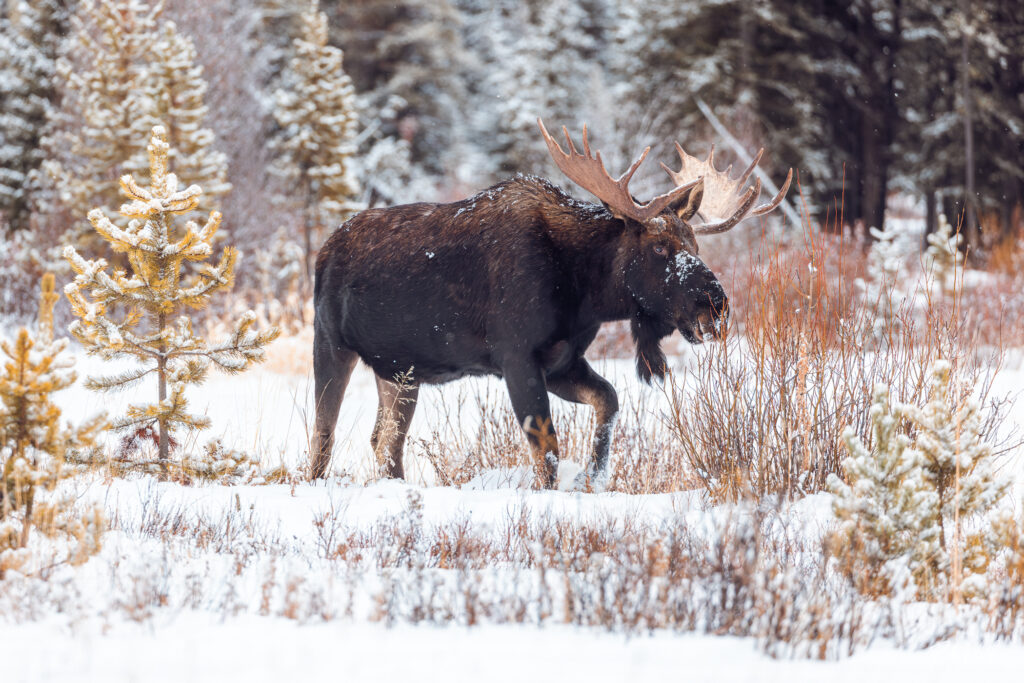
Thursday, January 25: After what seemed like an eternity, the day finally arrived for the first of our two snow coach days into Yellowstone’s interior, where we needed the specially chartered vehicles for over-snow travel. With crossed fingers and bated breath, we headed straight for the bison carcass on the Firehole. Wolves hadn’t been seen on the carcass at all during the previous day; not a good sign. We knew our chances were slim, but we had to try.
Pulling into the picnic area where most previous visitors had been watching the wolves from, we spotted two canines across the river on a piece of carcass that had been dragged out onto the shore, only 100 yards or so from the road. Coyotes. Their coats were thick and healthy, with beautiful patterns of brown, tan, gray, and black. We watched and photographed them for quite a while as they picked away at the remaining scraps, occasionally lunging at the ravens when they got too close. The whole time I was watching, I kept envisioning the wolf photos I had been bombarded with all week on social media. They were right there, I thought to myself as I watched a coyote liberate another small morsel of meat from a rib bone and eagerly gobble it up. I can’t believe they were right there.
We continued onward to the geyser basins, catching an eruption of Old Faithful and enjoying lunch and sunshine on a mild January day. During our return trip back north, as we rounded the corner into a wide-open landscape known as Fountain Flats, I noticed a dark shape in the distance, left of the road. Our snow coach driver and co-guide, Aleksa, had noticed it too. It was a spot where I had seen bison countless times. But my gut told me right away that this wasn’t the right shape or color to be a bison. I hastily grabbed my binoculars, but I couldn’t get a clear view with the coach still moving.
“Hang on. Stop a second,” I said without taking my binoculars away from my eyes. I was dimly aware that all conversation had stopped in the back of the coach. The tension in the air was palpable.
The coach came to a halt and Aleksa pulled out her binoculars as well. At that very moment, the animal turned broadside, and the shape was unmistakable: a black wolf. And then another black wolf appeared behind it.
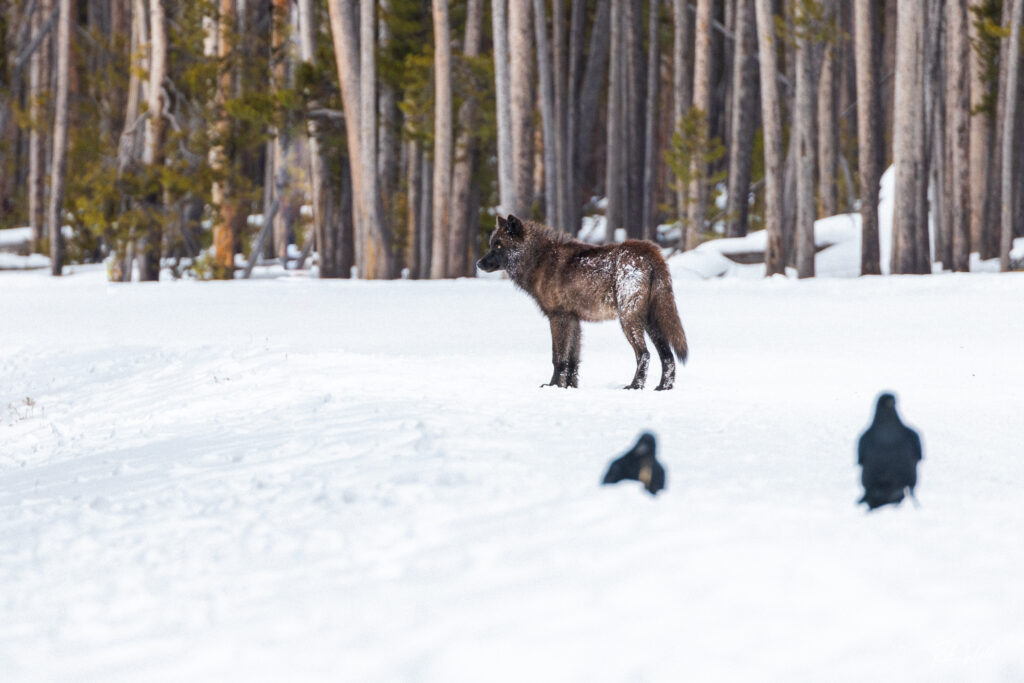
We pulled forward slightly, judging their trajectory toward the road and picking a spot where we could watch from a safe distance without getting in their way. Excitedly, but ever so quietly, we disembarked from the snow coach and sat in the snow as the two wolves emerged on the roadway 200 yards in front of us. They hardly paid us any mind. Waiting for its sibling to catch up, the lead wolf paused briefly and howled. The sound was immediate, not at all like the howls I had observed far in the distance through a spotting scope. And what really struck me was the added detail you could hear at close range: a whole host of higher frequencies that normally get diffused by the landscape when a howl travels for miles before reaching your ears.
“Everyone take a deep breath,” I quietly whispered to the group. “Double check your camera settings. Make sure you are properly focused. And calmly tap that shutter.” It’s a cruel irony that when these rare encounters actually happen and you finally have the opportunity for that close wolf photo, the excitement and nerves can often cloud your mind and make you overlook simple things that can ruin the shot. Taking a deep breath and staying calm is crucial to getting that once-in-a-lifetime photo.
The two wolves set off again, trotting down the roadway away from us and toward the bison carcass. We waited until they went around the corner out of view, then returned to the snow coach and slowly continued to the picnic area up ahead. Sure enough, they had crossed the river and were picking away at the same piece of bison carcass the coyotes had been gnawing at earlier that morning. We pulled into the picnic area and watched with awe as they chewed at the last scraps of meat and bone.
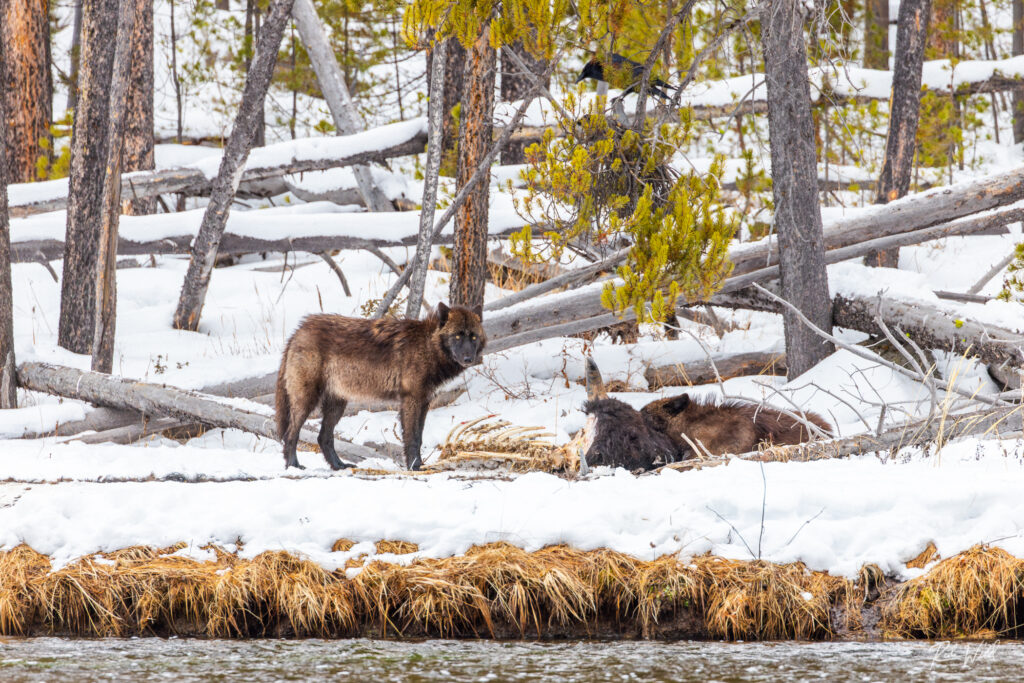
We no longer had to wonder what it would have been like to watch them right there. The reality of watching them right there was far more incredible than any mental image I had conjured up previously.
Periodically, one of them would howl and fill the surrounding canyon with the most soul-chilling sound I have ever experienced. We determined these were two pups from last year’s litter, and they were wondering where the rest of their pack had gone. The air was dead still except for the howls. For almost 15 minutes, we were the only humans around, sharing an intimate moment with these two symbols of the very embodiment of wilderness.
Unbeknownst to the wolves, the rest of their pack had ventured north and was no longer in the area. After more than half an hour of unanswered howls and unfulfilling scraps of bison gristle, they sauntered away into the trees and out of our view. We sat in shock for several more minutes, tears welling up in a few of our eyes, the distant howls of the retreating pups continuing to echo occasionally from somewhere over the hill. None of us could quite put into words what we had just experienced, but we all knew it was incredibly special.
Two days later, we were back on the Northern Range and saw the Wapiti Lake pack from a much greater distance on the slopes of Mount Everts near Mammoth Hot Springs. The whole pack was there, feeding on a new carcass buried in the brush on the mountainside. And those two pups were there too, likely having scent trailed the rest of the pack north when their howls went unanswered. Watching them reunited with the rest of the pack, sprawled lazily on the hillside in the distance, I smiled and gave them a silent nod of appreciation for the magical moment they shared with us—and us alone—down on the Firehole River.

